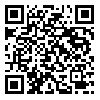Volume 11, Issue 1 (5-2022)
2022, 11(1): 15-26 |
Back to browse issues page
Download citation:
BibTeX | RIS | EndNote | Medlars | ProCite | Reference Manager | RefWorks
Send citation to:



BibTeX | RIS | EndNote | Medlars | ProCite | Reference Manager | RefWorks
Send citation to:
Koochaki chenani S, Babaie kafaki S, Kiadaliri H, Ebrahimi A, Etminan A. Genetic Diversity of Avicennia Marina in Costal Ecosystems of Southern Iran Based on Molecular Markers and Morphological Characteristics. Iranian Journal of Applied Ecology 2022; 11 (1) :15-26
URL: http://ijae.iut.ac.ir/article-1-1093-en.html
URL: http://ijae.iut.ac.ir/article-1-1093-en.html
science and research branch, islamic azad unuversity, tehran, iran
Abstract: (5114 Views)
Iranian mangrove forests provides valuable information to prevent genetic erosion in the gene pool of these ecosystems. The aim of this study was to investigate the genetic diversity among mangrove forests located in four different regions of Iran, based on morphological characteristics and microsatellite markers. Cluster analysis of molecular data, using neighbor joining algorithm classified the 60 mangrove trees, sampled from different coastal areas, into four groups. Analysis of molecular variance showed that the majority (77%) of the variance explained by among-population variation and the highest values of genetic diversity parameters including number of effective alleles, Shannon’s information index, and Nei’s genetic diversity were obtained for the Qeshm population, indicating that region is the most diverse population among all the studied populations. Baced on the morphological analyses significant differences were observed between all populations in terms of height, diameter at breast height, collar diameter, leaf size, pneumatophore length and pneumatophore diameter. The present study, provides useful information about genetic diversity of mangrove habitats which can be used in evolutionary studies and conservation efforts for these valuable plant ecosystems.
Send email to the article author
| Rights and permissions | |
 | This work is licensed under a Creative Commons Attribution-NonCommercial 4.0 International License. |







